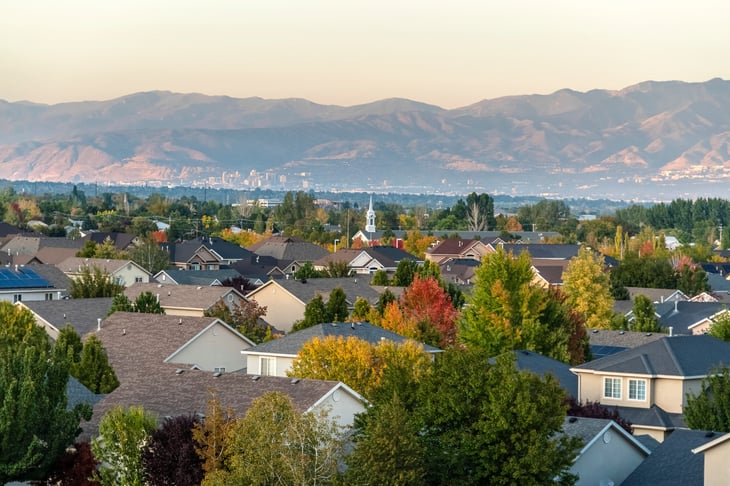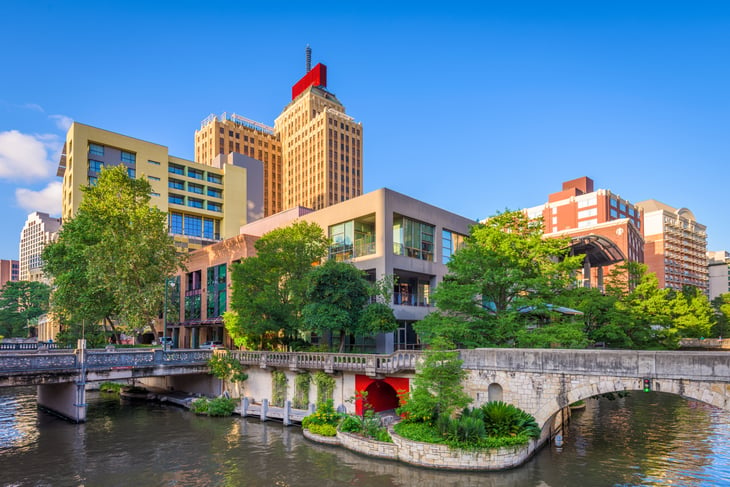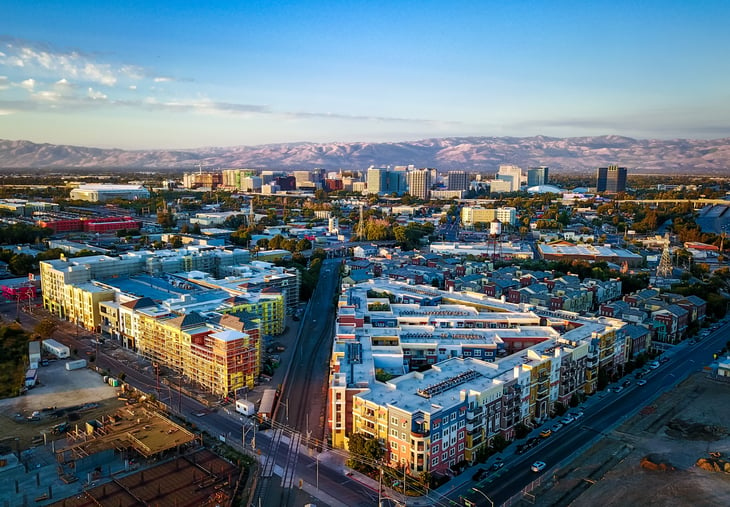
Editor's Note: This story originally appeared on Porch.
Homeownership is a common goal for millions of Americans, but a number of social and economic factors can affect people’s ability to reach that milestone. From income to educational attainment to racial and ethnic background, there are significant gaps in homeownership rates between different demographic groups in the U.S., and family structure and gender are no different.
Married couples tend to have higher rates of homeownership and can afford more expensive homes due to combined financial resources. But for singles, the U.S. sees a gap between rates of homeownership by gender. In 2021, 55.1% of single females owned a home, compared with 48.6% of single males.
The percentage of single female homeowners has exceeded the share of single male homeowners dating back at least 45 years. More than half of single women have been homeowners in all but five years since 1976, while the homeownership rate for single men has never topped 50% in that time.
Despite this, the gap has narrowed over time. The homeownership rate for single women was more than 15 percentage points higher than the rate for single men in the late 1970s, but today the gap is just 6.5 percentage points.
Women attain these higher rates of homeownership despite being on the unfavorable end of a different gender gap in compensation. Women in the U.S. earn around $0.84 for every $1 earned by men in the U.S.
In light of this financial disadvantage, women are more likely than men to make sacrifices when saving for a home. A recent study from the National Association of Realtors found that single women buyers were more likely to report cutting back on spending for non-essential goods, entertainment, clothes, and travel, which emphasizes how important homeownership is to them.
Porch analyzed data from the U.S. Census Bureau’s 2020 American Community Survey and found that these large metro areas (populations 1 million or more) have the largest gender gap in home ownership.
15. Dallas-Fort Worth-Arlington, TX

- Female homeownership gap (percentage points): 7.81
- Single female homeownership rate: 45.83%
- Single male homeownership rate: 38.02%
- Median property value for single women: $180,000
- Median property value for single men: $185,000
14. Chicago-Naperville-Elgin, IL-IN-WI

- Female homeownership gap (percentage points): 7.88
- Single female homeownership rate: 54.05%
- Single male homeownership rate: 46.17%
- Median property value for single women: $200,000
- Median property value for single men: $200,000
13. Raleigh-Cary, NC

- Female homeownership gap (percentage points): 7.99
- Single female homeownership rate: 51.97%
- Single male homeownership rate: 43.98%
- Median property value for single women: $185,000
- Median property value for single men: $200,000
12. Los Angeles-Long Beach-Anaheim, CA

- Female homeownership gap (percentage points): 7.99
- Single female homeownership rate: 41.46%
- Single male homeownership rate: 33.46%
- Median property value for single women: $550,000
- Median property value for single men: $560,000
11. Memphis, TN-MS-AR

- Female homeownership gap (percentage points): 8.23
- Single female homeownership rate: 51.75%
- Single male homeownership rate: 43.51%
- Median property value for single women: $120,000
- Median property value for single men: $120,000
10. Charlotte-Concord-Gastonia, NC-SC

- Female homeownership gap (percentage points): 8.26
- Single female homeownership rate: 56.24%
- Single male homeownership rate: 47.98%
- Median property value for single women: $160,000
- Median property value for single men: $155,000
9. Houston-The Woodlands-Sugar Land, TX

- Female homeownership gap (percentage points): 8.71
- Single female homeownership rate: 49.32%
- Single male homeownership rate: 40.62%
- Median property value for single women: $170,000
- Median property value for single men: $170,000
8. Salt Lake City, UT

- Female homeownership gap (percentage points): 8.80
- Single female homeownership rate: 56.61%
- Single male homeownership rate: 47.80%
- Median property value for single women: $250,000
- Median property value for single men: $250,000
7. Oklahoma City, OK

- Female homeownership gap (percentage points): 9.24
- Single female homeownership rate: 56.08%
- Single male homeownership rate: 46.84%
- Median property value for single women: $125,000
- Median property value for single men: $126,000
6. Miami-Fort Lauderdale-Pompano Beach, FL

- Female homeownership gap (percentage points): 9.92
- Single female homeownership rate: 57.88%
- Single male homeownership rate: 47.97%
- Median property value for single women: $235,000
- Median property value for single men: $250,000
5. San Francisco-Oakland-Berkeley, CA

- Female homeownership gap (percentage points): 9.93
- Single female homeownership rate: 45.83%
- Single male homeownership rate: 35.90%
- Median property value for single women: $750,000
- Median property value for single men: $750,000
4. Tucson, AZ

- Female homeownership gap (percentage points): 9.94
- Single female homeownership rate: 55.59%
- Single male homeownership rate: 45.65%
- Median property value for single women: $170,000
- Median property value for single men: $160,000
3. San Antonio-New Braunfels, TX

- Female homeownership gap (percentage points): 10.25
- Single female homeownership rate: 53.34%
- Single male homeownership rate: 43.10%
- Median property value for single women: $145,000
- Median property value for single men: $145,000
2. New Orleans-Metairie, LA

- Female homeownership gap (percentage points): 10.53
- Single female homeownership rate: 56.31%
- Single male homeownership rate: 45.78%
- Median property value for single women: $174,000
- Median property value for single men: $169,000
1. San Jose-Sunnyvale-Santa Clara, CA

- Female homeownership gap (percentage points): 10.99
- Single female homeownership rate: 49.22%
- Single male homeownership rate: 38.22%
- Median property value for single women: $900,000
- Median property value for single men: $875,000
Methodology

The data used in this analysis is from the U.S. Census Bureau’s 2020 American Community Survey, the most recent data available.
To determine the locations with the largest gender homeownership gaps, researchers at Porch calculated the percentage point difference between the single female homeownership rate and the single male homeownership rate. For the purposes of this study, single females and males were limited to those 18 years and older, not currently married (widowed, divorced, separated were considered single), and without children living in the same household. In the event of a tie, the metro with the higher single female homeownership rate is ranked higher.
To improve relevance, only metropolitan areas with at least 100,000 residents were included. Additionally, metros were grouped into cohorts based on population size: small (100,000–349,999), midsize (350,000–999,999), and large (1,000,000 or more). Note, only metros with complete data for 2020 were considered in this analysis.





Add a Comment
Our Policy: We welcome relevant and respectful comments in order to foster healthy and informative discussions. All other comments may be removed. Comments with links are automatically held for moderation.